How the ‘Strange Planet’ Tiny Cuties Became Huge TV Stars
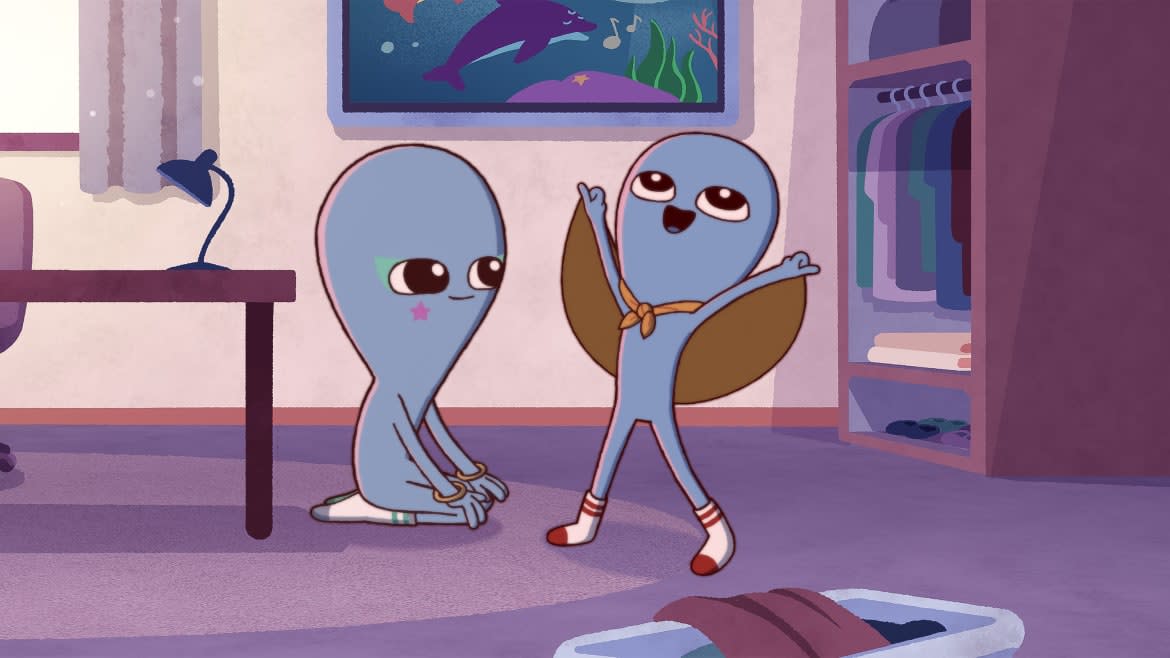
- Oops!Something went wrong.Please try again later.
- Oops!Something went wrong.Please try again later.
Considering how quickly they became ubiquitous, that cartoonist Nathan Pyle’s Strange Planet comics only began in 2019 is surprising. Not long after Pyle launched the breezy, quirky strip about the everyday lives of extraterrestrials, which he uploaded to his social media pages on a near-daily basis, the internet latched onto them.
There was something immediately endearing about Pyle’s big-headed, wide-eyed, blue aliens, who spoke in a humorous staccato and referred to our basic Earthly objects by appropriately odd monikers. These make up a large part of the fun of Strange Planet. To the nameless, identical-looking cast of Strange Planet, a hug is a “mutual limb enclosure;” a glass of water is a “hydration cylinder;” a tan is called “star damage.”
These strange-sounding little creatures have since garnered more than seven million followers on Instagram, and a bound compilation of the comics became a New York Times bestseller. There are card games and T-shirts and stickers galore.
But considering that there’s not much else to these comics than the quippy panels—the humor goes a long way toward world-building, but there’s no overarching plot—that Apple TV+ had signed on to produce a half-hour animated series based on Strange Planet seemed curious. Was it going to be short sketches, like the comics? And with Dan Harmon (Community, Rick and Morty) on board as co-creator, would the wholesome humor change?
Instead, four years after the comics’ debut, Harmon and Pyle’s cartoon take arrives in unique and impressive form. Each half-hour episode of Strange Planet follows a consistent set of characters, whose genuine relationships grow alongside the wackiness of their alien culture. It’s an unexpected but surprisingly effective tweak to the comics’ formula.
The Daily Beast’s Obsessed recently chatted with Pyle about the explosive popularity of his comics, adapting them into a much different format, and creating characters in a world where no one even has a name.
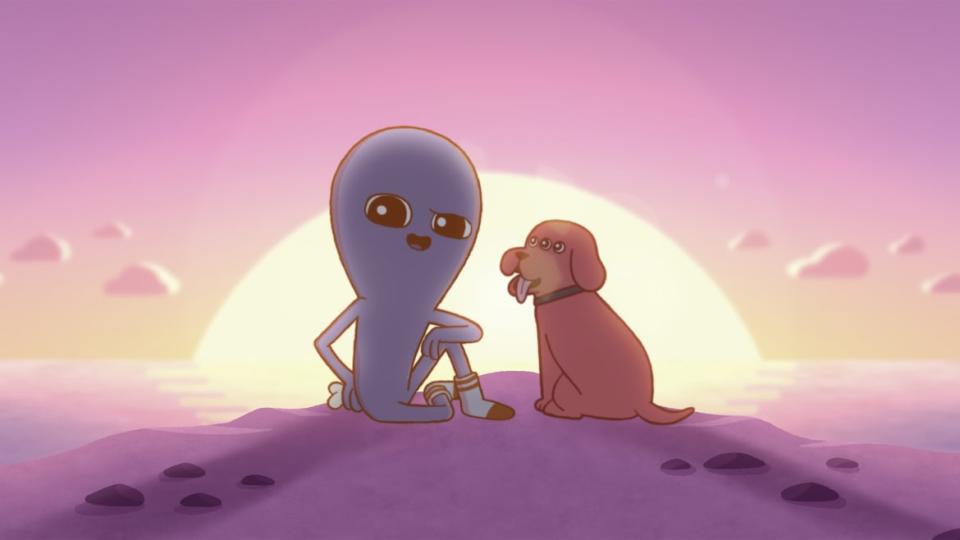
Despite the Strange Planet comics now feeling like they’ve been around forever, you only started making them in 2019. Are you at all overwhelmed by how quickly the success has grown?
Oh, certainly. It’s beyond one’s wildest imagination to be here—to be premiering on Apple TV+. But linking up with the talented people that we were able to link up with immediately to pitch and create the show, you really start to believe in it, because you’ve seen what they’ve made. You’ve seen what Dan Harmon has made. You’ve seen what [animation studio] Shadow Machine has made. Shadow Machine just won an Oscar for Guillermo Del Toro’s Pinocchio, but before that, they had made BoJack and all these other famous things. So, to me, it was really like, I believe they know how to make television, so I’m going to come to the party with this crew here.
The show’s animation is excellent, and it’s an interesting adaptation of the much simpler look of the four-panel comics. But having a writer like Dan Harmon attached felt like an even bigger change, from an outsider’s perspective. What was appealing about working with him in particular?
The table where the study group sits during Community [really resonated with me]. They’re sitting there, and you’re really entering a physical space as a viewer— you really want to sit at that table. You want to laugh, and you want to feel the awkward moments. I think what Dan accomplishes in Community and so many other things that he makes are that he’s good at creating a world. It’s a very strange world, but I want to enter into it.
So it was a really fun thing to be a part of with someone who historically had amused me in that way, specifically.
‘Strange Planet’ Review: These Cute Aliens Get Very Annoying, Very Fast
Community is a great point of reference, because I think a lot of people would quickly think of Rick and Morty. That show feels relevant in terms of the story focusing on aliens and space. But compared to Strange Planet’s storytelling and humor, Rick and Morty is quite different and less family-friendly. Was that something you discussed—making the show more like Community, less like Rick and Morty?
Dan was quick to defer to the vision of the webcomic, which I said [to him], this is a wholesome webcomic. I just had to be upfront about this.
Dan heard the idea and the premise—these beings don’t have names, they’re experiencing an existential crisis just like we are, but we’re the aliens to them—and this was intriguing to him. So intriguing to the point that he wanted to keep the core ideas of it. And that was helpful, because immediately upon announcing the show—I think this happened probably two years ago at this point—some people wondered, like, “Whoa, are you going to make this a crass show?” And Dan was like, “No, we’re deferring to Nathan’s vision of the show.”
What was your vision?
I grew up on the Muppets, and that was the kind of thing I wanted to create. I want to create something that’s like the Muppets in that—you know, families have come up to me at [Strange Planet] book signings or events. That’s a neat thing that I wanted to maintain. I wanted families to be able to watch together.
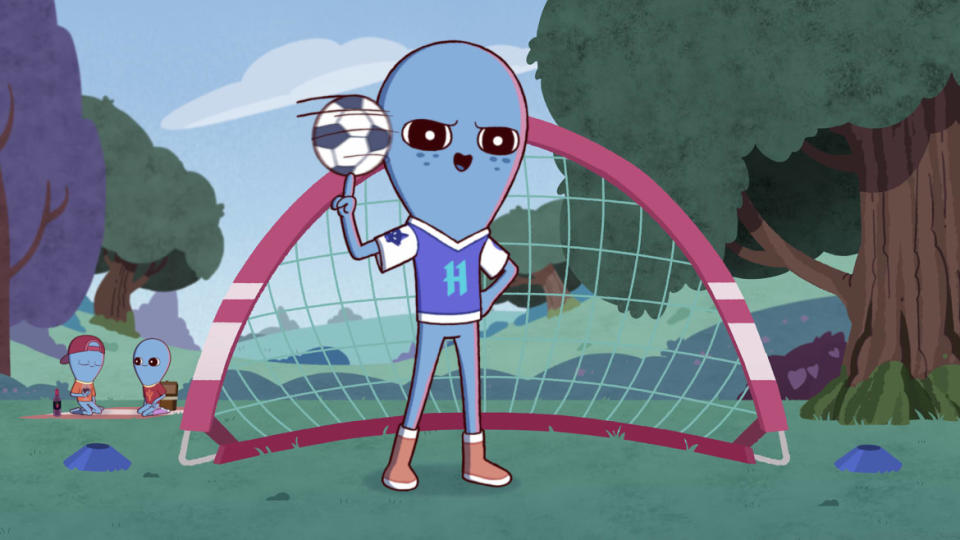
That family-friendly vibe does come through. Another part of the comics is that their humor draws on your illustration style and the strips’ brevity. When talking initially about adapting the comics, did you discuss potential challenges in how to convert that into a full-length show?
At its core, you have a webcomic. The average word count is like, 35. That’s a pretty small number of words. One of the ideas behind me making it that short, though, was you have a very short amount of time to grab anyone’s attention on the internet, as anyone working for the internet knows.
Definitely.
When you’re thinking of the number of words that are in a script… you’re creating an infinitely larger piece of work. You don’t even compare them. What you want to do [for the TV show] is start with a character whose anxiety is maybe highlighted, or maybe their quirk or motivation is highlighted in a webcomic piece, but then develop a “story circle” for that character. That was what really built stories out of characters, and as I became more and more comfortable with it over time, it became more second nature to me. But I didn’t start out that way.
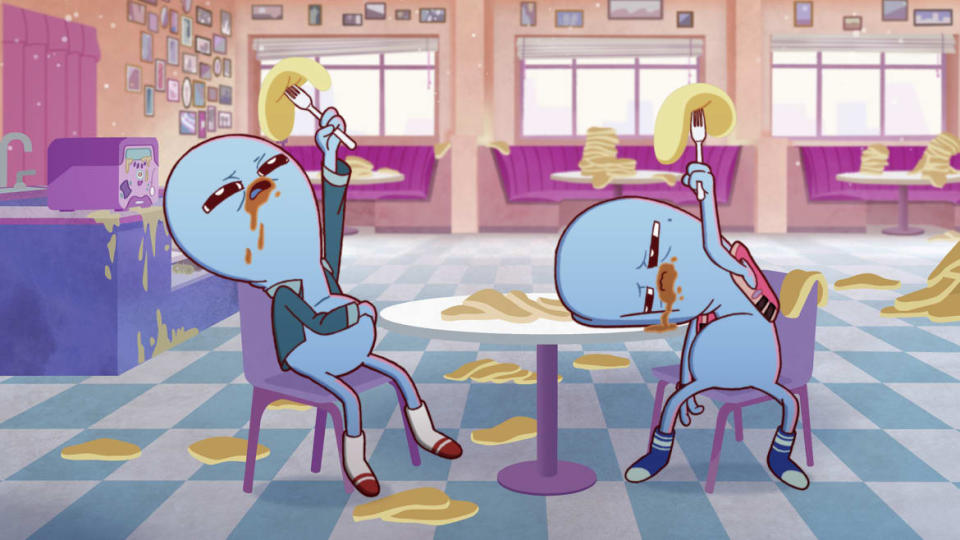
I was a little bit surprised that the show did have core characters with actual character development, much unlike the comics. Do you think that fans of the comics want something like that, or did you expect them to be surprised by that change over the comics?
One of the mistakes creators can make is thinking of their own fans as a block. There is no monolithic desire from the fans, and that’s proven even in the first few times I’ve shown anything to the fans on Instagram. There’s a whole variety of reviews and suggestions and compliments and whatever the opposite of a compliment is. It’s fun, because you realize they all have different things that attract them to Strange Planet. Some fans have told me that they like Strange Planet most because it helps their vocabulary. They actually love learning new words from Strange Planet.
I think that’s what’s been neat, is I don’t necessarily think the fans will, as one, want any one aspect of Strange Planet to expand. What they want is to be intrigued and surprised.
‘Spider-Man: Lotus’: Scandal-Plagued Fanmade Film Is a Mess
Strange Planet has already shown its flexibility in different forms, I think, which I would imagine, would help. Like there’s even a card game.
It’s been fun to kind of play in that. Here’s a sandbox, here’s another sandbox. I like to talk about the Muppet Babies, where the Muppet Babies create a different lore for the Muppets than, say, The Muppet Movie. How do all these Muppets meet? Were they all babies together or did they meet as adults? Who can say, right? Maybe both things are true about the Muppets, but that’s part of what creates expansion.
It’s fascinating to think that these are characters we know, and we just accept that there’s different kinds of lore about them. It doesn’t really matter that much, because you can create a new adaptation tomorrow where they’re robots.
Yeah, there’s a Sesame Street mecha show now, for some reason, where they’re all Transformers, basically. But that’s a really funny comparison, as a lifelong Muppet Babies fan.
Who doesn’t love Muppet Babies? That’s how they met. They were all babies together. Sure.
How did you approach conceiving of the characters for this iteration of Strange Planet?
I think part of that was finding the voices. You find the voices and you hear the voices. Hannah Einbinder, Lori Tan Chinn, Demi Adejuyigbe, Danny Pudi—you can hear the voice, and you’re like, Oh, this is so fun to write for this character. It’s such a unique back and forth, where you’re starting to create a character, but then you’re having [the voice actors] read lines and you’re like, Huh, I love the way they say X.
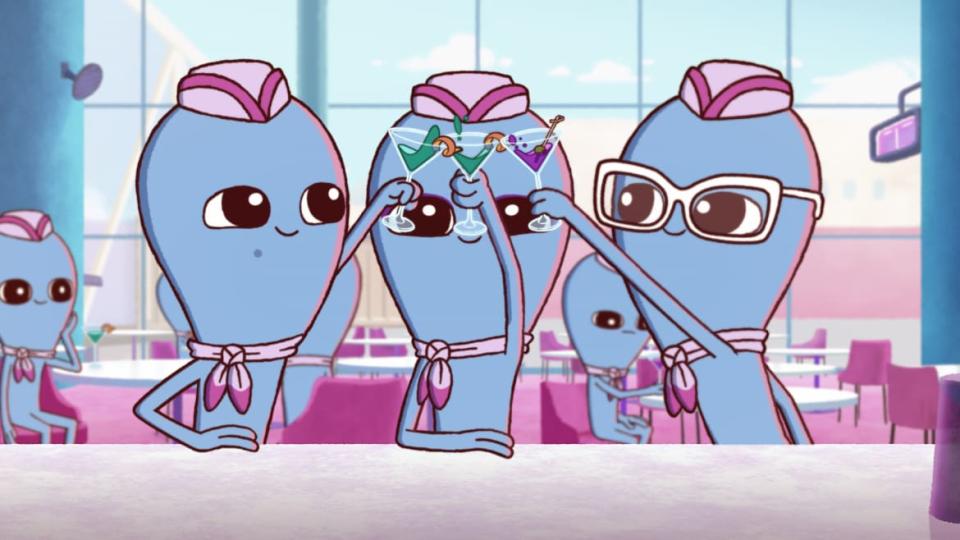
Part of that was also deciding as time went on. Lori Tan Chinn’s character is a little bit elderly, so that was interesting, because it brought all these questions about, well, how long do the beings live? Do they have lifespans similar to ours? Are they living longer or shorter lives than ours? There were many questions to answer, which is part of the creation process, which I really enjoy.
There are all these other little world-building quirks that seem fun—the characters all wear socks on their feet outside for example. It must have been fun to further develop the world you created in 22-minute bites.
One of the few places that I mention in the comics is this region called the Far From Liquid, which was meant to kind of reflect my own upbringing in the Midwest. I was actually 18 when I saw the ocean for the first time. Many people who live on the coasts, they just think, well, that’s far too old to see the ocean for the first time. But it just wasn’t where my family went when we went on vacation. So seeing there are places near the liquid and far from the liquid and how that might affect the beings who live there was something that I was thinking about making my comics, but I never fully explored [before the show]. That was so fun, because I realized this is a huge part of world-building—simply having this backstory.
Get the Daily Beast's biggest scoops and scandals delivered right to your inbox. Sign up now.
Stay informed and gain unlimited access to the Daily Beast's unmatched reporting. Subscribe now.

